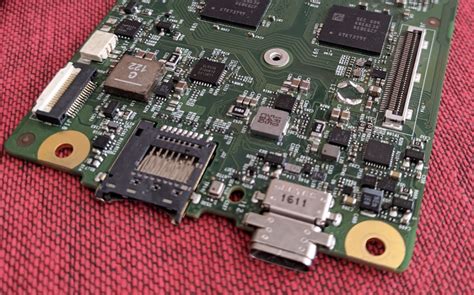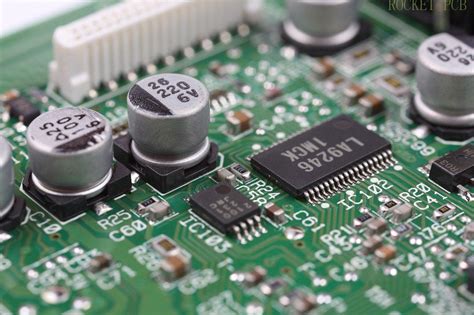Resistors: Controlling Current Flow
Resistors are passive components that oppose the flow of electric current in a circuit. They are used to control voltage levels, limit current, and divide voltages. Resistors come in various types, including:
Fixed Resistors
Fixed resistors have a constant resistance value and are the most common type used in PCBAs. They are available in different power ratings, tolerances, and package sizes.
Variable Resistors
Variable resistors, such as potentiometers and rheostats, allow for adjustable resistance values. They are used in applications that require user-adjustable settings, such as volume controls or dimmer switches.
SMD Resistors
Surface-mount device (SMD) resistors are designed for automated assembly processes and offer a more compact footprint compared to through-hole resistors.
| Resistor Type | Characteristics | Applications |
|---|---|---|
| Fixed | Constant resistance value | Voltage division, current limiting |
| Variable | Adjustable resistance value | User-adjustable settings, volume controls |
| SMD | Compact footprint, suitable for automated assembly | Space-constrained designs, high-volume production |
Capacitors: Storing and Filtering Electrical Energy
Capacitors are passive components that store electrical energy in an electric field. They are used for filtering, decoupling, and smoothing voltage fluctuations in a circuit. There are several types of capacitors, including:
Ceramic Capacitors
Ceramic capacitors are non-polarized and offer a wide range of capacitance values. They are commonly used for high-frequency filtering and decoupling applications.
Electrolytic Capacitors
Electrolytic capacitors are polarized and provide high capacitance values in a compact package. They are often used in power supply filtering and low-frequency coupling applications.
Tantalum Capacitors
Tantalum capacitors are polarized and offer high capacitance values with a small footprint. They are known for their stability and low leakage current, making them suitable for applications that require long-term reliability.
| Capacitor Type | Characteristics | Applications |
|---|---|---|
| Ceramic | Non-polarized, wide range of capacitance values | High-frequency filtering, decoupling |
| Electrolytic | Polarized, high capacitance values, compact size | Power supply filtering, low-frequency coupling |
| Tantalum | Polarized, high capacitance, small footprint, stable | Long-term reliability, low leakage current |

Inductors: Storing Magnetic Energy
Inductors are passive components that store energy in a magnetic field when current flows through them. They are used for filtering, noise suppression, and energy storage in a circuit. Common types of inductors include:
Air Core Inductors
Air core inductors have no magnetic core material and offer low inductance values. They are suitable for high-frequency applications and have low losses.
Ferrite Core Inductors
Ferrite core inductors use a ferromagnetic material as the core, which increases their inductance value and improves their efficiency. They are commonly used in power supply circuits and EMI suppression.
Toroidal Inductors
Toroidal inductors have a donut-shaped core, which provides a closed magnetic path and minimizes electromagnetic interference (EMI). They offer high inductance values and are often used in power converters and filters.
| Inductor Type | Characteristics | Applications |
|---|---|---|
| Air Core | No magnetic core, low inductance, low losses | High-frequency applications |
| Ferrite Core | Ferromagnetic core, increased inductance, improved efficiency | Power supply circuits, EMI suppression |
| Toroidal | Donut-shaped core, closed magnetic path, high inductance, low EMI | Power converters, filters |

Diodes: Controlling Current Direction
Diodes are semiconductor devices that allow current to flow in only one direction. They are used for rectification, voltage regulation, and protection against reverse polarity. Some common types of diodes include:
Rectifier Diodes
Rectifier diodes convert alternating current (AC) to direct current (DC) by allowing current to flow only in one direction. They are used in power supply circuits and voltage rectification applications.
Zener Diodes
Zener diodes are designed to operate in reverse breakdown mode, providing a stable reference voltage. They are used for voltage regulation and overvoltage protection.
Light-Emitting Diodes (LEDs)
LEDs are diodes that emit light when forward-biased. They are used as indicators, displays, and lighting sources in various applications.
| Diode Type | Characteristics | Applications |
|---|---|---|
| Rectifier | Allows current flow in one direction, converts AC to DC | Power supply circuits, voltage rectification |
| Zener | Operates in reverse breakdown mode, provides stable reference voltage | Voltage regulation, overvoltage protection |
| LED | Emits light when forward-biased | Indicators, displays, lighting sources |

Transistors: Amplifying and Switching Signals
Transistors are semiconductor devices that can amplify or switch electrical signals. They are the building blocks of modern electronics and are used in a wide range of applications. The two main types of transistors are:
Bipolar Junction Transistors (BJTs)
BJTs are current-controlled devices that consist of three regions: emitter, base, and collector. They are used for amplification and switching applications.
Field-Effect Transistors (FETs)
FETs are voltage-controlled devices that use an electric field to control the conductivity of a channel between the source and drain terminals. They are further divided into two types:
– Junction Field-Effect Transistors (JFETs)
– Metal-Oxide-Semiconductor Field-Effect Transistors (MOSFETs)
FETs are known for their high Input impedance and are commonly used in analog and digital circuits.
| Transistor Type | Characteristics | Applications |
|---|---|---|
| BJT | Current-controlled, three regions (emitter, base, collector) | Amplification, switching |
| FET | Voltage-controlled, high input impedance | Analog and digital circuits |
| – JFET | Operates in depletion mode | Low-noise amplifiers, voltage-controlled resistors |
| – MOSFET | Operates in enhancement or depletion mode | Power switching, logic gates, amplifiers |
Integrated Circuits (ICs): Miniaturizing Complex Circuits
Integrated circuits (ICs) are miniaturized electronic circuits that combine multiple components, such as transistors, diodes, resistors, and capacitors, on a single semiconductor substrate. ICs have revolutionized the electronics industry by enabling the development of compact, reliable, and cost-effective electronic devices. Some common types of ICs include:
Analog ICs
Analog ICs process continuous signals and are used in applications such as amplifiers, filters, and Voltage Regulators.
Digital ICs
Digital ICs process discrete signals and are used in logic gates, microprocessors, and memory devices.
Mixed-Signal ICs
Mixed-signal ICs combine both analog and digital components on a single chip, allowing for the integration of signal processing and control functions.
| IC Type | Characteristics | Applications |
|---|---|---|
| Analog | Processes continuous signals | Amplifiers, filters, voltage regulators |
| Digital | Processes discrete signals | Logic gates, microprocessors, memory devices |
| Mixed-Signal | Combines analog and digital components on a single chip | Signal processing, control functions |
Frequently Asked Questions (FAQ)
1. What is the difference between a fixed resistor and a variable resistor?
A fixed resistor has a constant resistance value that cannot be changed, while a variable resistor, such as a potentiometer or rheostat, allows for adjustable resistance values.
2. What are the main differences between ceramic, electrolytic, and tantalum capacitors?
Ceramic capacitors are non-polarized and offer a wide range of capacitance values, making them suitable for high-frequency filtering and decoupling applications. Electrolytic capacitors are polarized and provide high capacitance values in a compact package, often used in power supply filtering and low-frequency coupling. Tantalum capacitors are also polarized and offer high capacitance values with a small footprint, known for their stability and low leakage current.
3. What is the purpose of a zener diode?
A zener diode is designed to operate in reverse breakdown mode, providing a stable reference voltage. They are used for voltage regulation and overvoltage protection in electronic circuits.
4. What is the difference between BJTs and FETs?
Bipolar Junction Transistors (BJTs) are current-controlled devices that consist of three regions: emitter, base, and collector. They are used for amplification and switching applications. Field-Effect Transistors (FETs) are voltage-controlled devices that use an electric field to control the conductivity of a channel between the source and drain terminals. FETs are known for their high input impedance and are commonly used in analog and digital circuits.
5. What are the advantages of using integrated circuits (ICs) in electronic designs?
Integrated circuits (ICs) offer several advantages in electronic designs, including:
– Miniaturization: ICs combine multiple components on a single semiconductor substrate, allowing for compact and space-efficient designs.
– Reliability: ICs are manufactured in a controlled environment, resulting in consistent performance and reduced chances of component failures.
– Cost-effectiveness: Mass production of ICs reduces the cost per unit, making electronic devices more affordable.
– Functionality: ICs can be designed to perform specific functions, such as signal processing, amplification, or logic operations, simplifying the overall Circuit design.
In conclusion, understanding the basic electronic components is crucial for every PCBA designer. Resistors, capacitors, inductors, diodes, transistors, and integrated circuits form the foundation of electronic circuits and play essential roles in the functioning of PCBAs. By familiarizing themselves with the characteristics, applications, and limitations of these components, PCBA designers can create reliable, efficient, and cost-effective designs that meet the requirements of modern electronic devices.

No responses yet